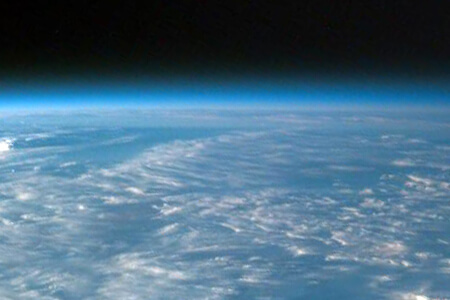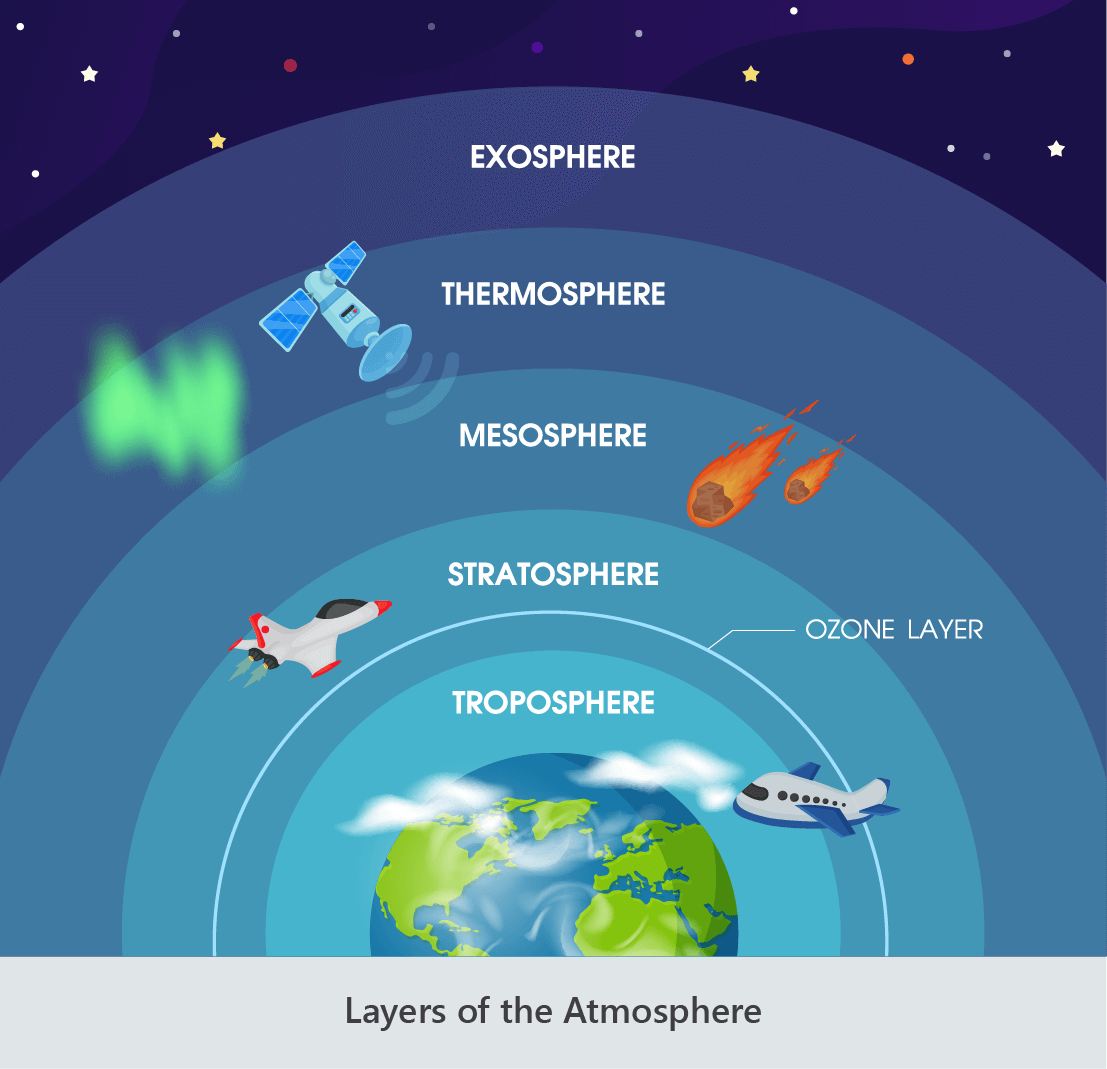4 | The Atmosphere
The Atmosphere
- The atmosphere consists of a layer of gases, collectively referred to as air, that surrounds Earth.
- Air is composed mostly of nitrogen (78%) and oxygen (21%), with small amounts of other gases, including argon (0.9%) and carbon dioxide (0.04%).
- The atmosphere also contains, on average, about 0.4% water vapour.

The atmosphere is a layer of air that surrounds Earth.
It consists mostly of nitrogen and oxygen.
(Image: NASA)
- The atmosphere is divided into five main layers which are defined by their temperature profiles. In order of increasing distance from Earth’s surface, these layers are:
- The troposphere – the layer containing the air we breathe and where most weather events are generated.
- The stratosphere – the layer containing the ozone layer, which absorbs harmful ultraviolet radiation and protects life on Earth.
- The mesosphere – the layer where most meteors burn up.
- The thermosphere – the layer where the auroras occur and where most satellites orbit Earth.
- The exosphere – the transition region between the atmosphere and outer space.
- Temperature alternately decreases and increases between different layers of the atmosphere.
- This limits the movement of air between layers.
- Air pressure (atmospheric pressure) and air density both decrease exponentially with altitude.
- Consequently, about 75% of all air and almost all water vapour exists in the lower atmosphere (troposphere).

The atmosphere consists of five main layers.
(Image: anuwat, Adobe Stock)
Quizzes

